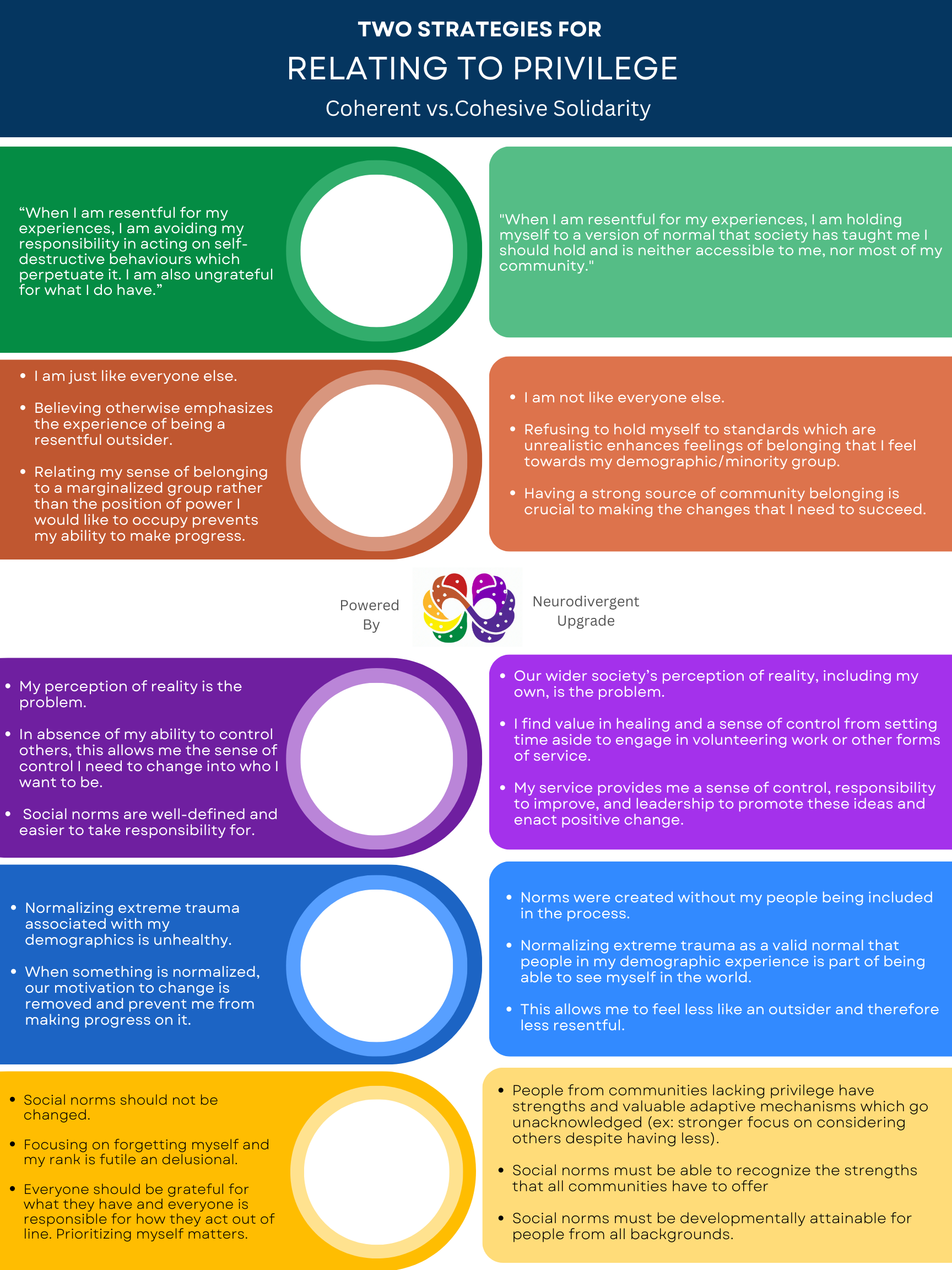Cohesive Solidarity
These are links to help people with disabilities cut down on the emotional labour of self advocacy. This page can help you understand what cohesive solidarity is.
Relevant Definitions
Coherence Describes ideas, values, perspectives, situations (etc.) that are clear-cut.
Cohesion Describes things which are relatable whether they make sense to others or not.
Cohesive Solidarity Is the act of healing or otherwise engaging in actions related to what is familiar to someone, regardless of whether it is understood by those around them.
It responds to situations where one’s community is not being reflected in the wider discourse by leaning into one’s differences, rather than focusing on fitting in the way which is most coherent to others, like the way most would climb a hierarchy.
Privilege: Coherent Or Cohesive Solidarity?
Cohesive solidarity in the context of climbing a wider social hierarchy involves doing so in a way which strategically rejects the approaches which are typically used by the majority and instead using strategies which are more appropriate to one’s identity.1
Relating to privilege in a manner which is coherent to a wider society dominated by historically British traditions of being, interacting, and interpreting may work for some individuals, but not everyone.

Footnotes
The easiest example of this is the notion of making one’s marginalized identity part of their professional “brand”.↩︎
